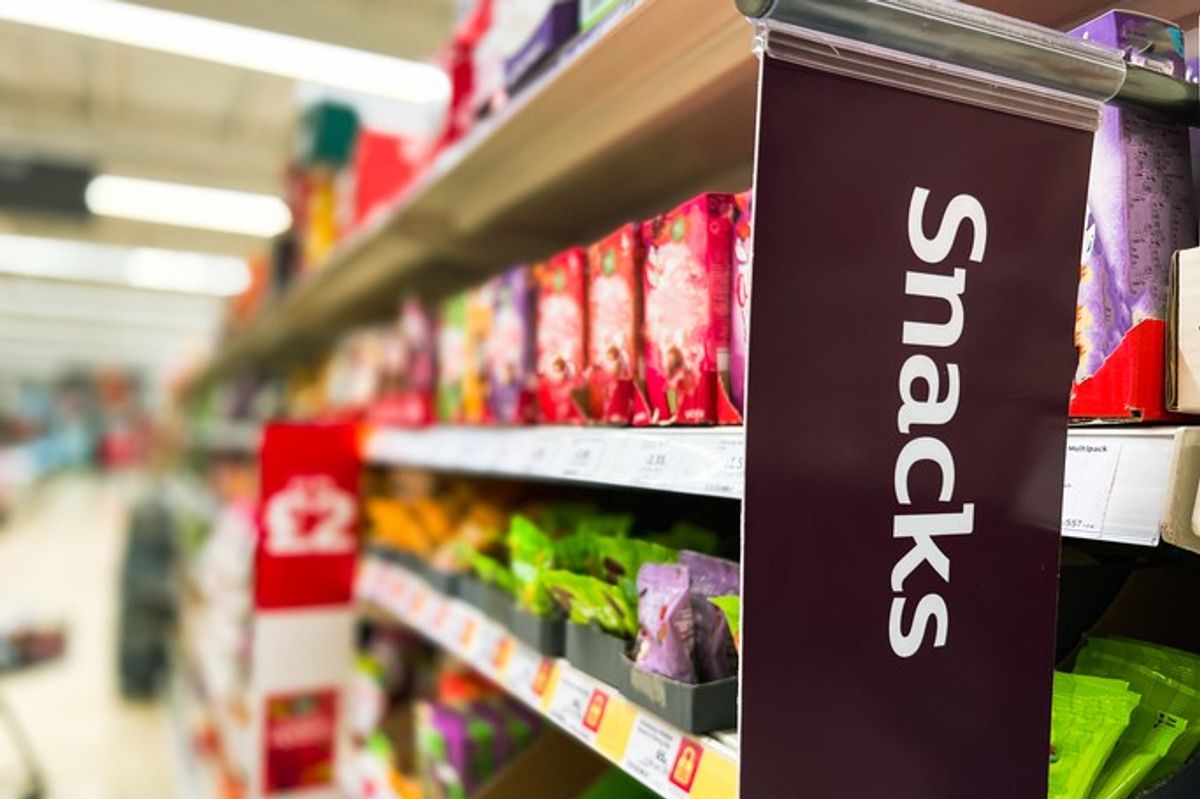Majority of 1,200 crisps, nuts and popcorn snacks sold in stores contain such high levels of “hidden salt” that they fail to meet government’s criteria for healthier food, a new report has warned, raising alarm ahead of October 2025 advertising restrictions.
From October, there will be a pre-9pm television watershed on junk food adverts, as well as a blanket ban for online and social media ads.
The Action on Salt and Sugar research team, based at Queen Mary University of London, analysed sugar and salt in nuts, crisps and ready-to-eat popcorn on supermarket shelves.
According to the report released today (18) by the research group, one in three bags of ready-to-eat popcorn contain more salt than a packet of cheese and onion crisps.
Additionally, 77 per cent of crisps, 56 per cent of nuts and 88 per cent of popcorn would fall foul of healthy eating criteria.
The saltiest popcorn was Joe & Seph’s Sweet & Salty Popcorn, with 2.25g salt per 100g, higher than most crisps.
As well as often being too salty, 42 per cent of popcorn would also receive a red warning label for sugar content. The worst offender was Morrisons Market Street Toffee Flavour Popcorn with 59.1g of sugar per 100g.
Some crisps also continue to provide excessive levels of salt in our diets, with one in three products requiring a high (red) salt warning label on the front of the pack.
Among the worst offenders is Eat Real Lentil Chips Chilli & Lemon, which contains 3.6g of salt per 100g – a staggering amount that’s saltier than the concentration of seawater and exceeding the government’s salt target, states the report.
Meanwhile, plain nuts are naturally low in salt, but many flavoured varieties fail to meet healthier standards.
Nearly one in four flavoured nuts exceed salt targets, with Forest Feast Slow Roasted Colossal Cashews containing 2.60g of salt per 100g – more than double the government’s salt target, states the report.
Total sugar levels are just as concerning. Whitworths Shots Chocolate & Hazelnut packs an alarming 51g of total sugars per 100g10, meaning a small 25g serving contains over three teaspoons of sugars.
Whilst many snacks are high in salt and sugars, notably the data presents a wide variation in nutrition content demonstrating that, in many cases, it is unnecessary and they can be made with less salt.
The report adds that despite clear evidence that salt reduction is both achievable and necessary, only "eight companies have fully met the salt targets set for these snacks, with a further four achieving ≥95 per cent compliance".
Disappointingly, nine companies have failed to meet the targets in at least half their snacks portfolio, despite being given four years to succeed.
Sonia Pombo, Head of Impact and Research at Action on Salt, says, “It’s clear that voluntary efforts to improve food nutrition have largely fallen short. Yet this isn’t about feasibility as some companies have already shown that reformulation is possible.
"It's about time the government get tough with companies and implement mandatory targets with strong enforcement. Without this, the UK’s hidden salt and sugar crisis will persist, putting consumers at risk and leaving responsible brands at a disadvantage in an uneven marketplace.”
Dr Pauline Swift – Chair of Blood Pressure UK adds, “Reducing salt isn’t just a health recommendation – it’s a lifesaving necessity. Excess salt, often hidden in everyday foods, raises blood pressure, which is the leading cause of strokes, heart and kidney disease – all of which is completely avoidable.
"Without urgent action to cut both salt and sugar levels, we’re gambling with lives. The government must step up with enforceable targets to protect public health."





